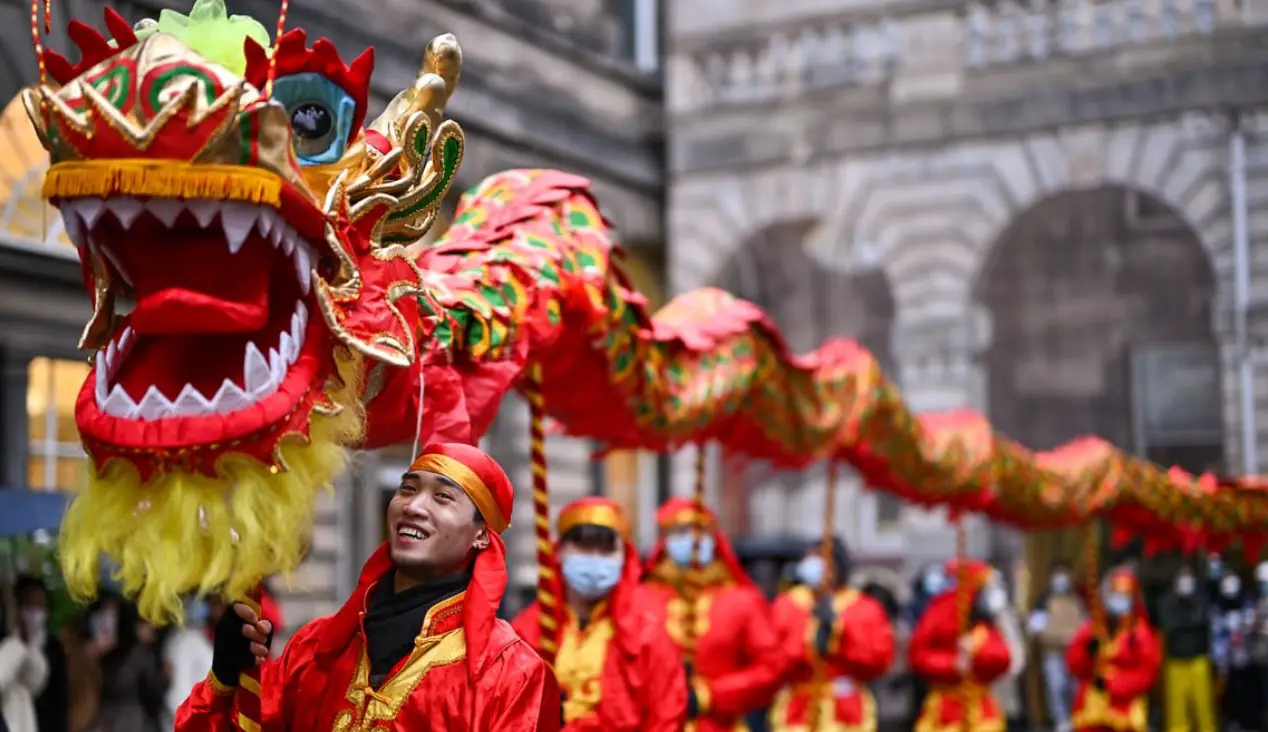The Lunar New Year, also known as the Chinese New Year or the Spring Festival, is the most crucial celebration in the Chinese calendar. It signifies the beginning of a new year and is an occasion for families to gather and celebrate together. One of the most recognizable and significant aspects of the Lunar New Year is the Dragon Dance.
The Significance of the Dragon in Lunar New Year Festivities
The dragon is an auspicious symbol in Chinese culture, representing strength, wisdom, and good fortune. It is a mythical creature depicted as a long, serpentine creature with four legs and, sometimes, wings. It is believed to have control over water-related phenomena such as rainfall, typhoons, and floods.
The dragon dance symbolizes new beginnings, prosperity, and good luck during the Lunar New Year. It is believed that the dance helps to drive away evil spirits and purify the atmosphere, bringing about a year of abundance and happiness. The dragon plays a central role in the celebration, embodying the hopes and aspirations of the people for the coming year.
Preparation and Training for a Dragon Dance Performance
Performing a dragon dance requires skill, strength, endurance, teamwork, and coordination among the performers. The dragon is made of bamboo, paper, and fabric and can measure anywhere from 20 to over 100 meters long. It is controlled by a team of dancers manipulating their movements using poles attached to its body.
Preparation for the Dragon dance involves rigorous training, starting from a young age. Performers practice acrobatics, balance, coordination, and learning choreography. The ‘pearl chaser’ leads the team, guiding the dragon’s head and setting the pace for the entire performance, while the rest of the team follows in perfect synchronization.
The dragon dance is a vibrant and captivating performance, symbolizing good luck, prosperity, and new beginnings. It is a popular tradition during the Lunar New Year, with variations in different regions of China and other parts of the world. The dance is accompanied by the rhythmic beat of drums and cymbals, adding to the festive atmosphere.
The Symbolic Meaning of the Dragon Dance in Lunar New Year Celebrations
The dragon dance has symbolic meanings in each aspect of the performance. The dragon’s serpentine movements represent the flow of life and energy. The dragon’s head symbolizes wisdom, while its tail signifies abundance and wealth.
The dance starts with the dragon emerging from its cave, symbolizing the awakening of the earth and the coming of spring. The dragon chases a ‘pearl’ throughout the dance, representing the pursuit of wisdom and enlightenment. The dragon’s fluid and graceful movements embody the natural world and the cyclical nature of life.
The dragon dance is a traditional and highly symbolic performance, reflecting the rich cultural heritage of China. It is a celebration of life, prosperity, and good luck and is widely enjoyed by people worldwide.
How the Dragon Dance Brings Luck and Fortune in the Lunar New Year
The dragon dance during Lunar New Year attracts good luck and fortune for the coming year while dispelling negative energy and evil spirits. The dance purifies the environment, ensuring a smooth transition into the new year.
The dragon’s movements mimic the flow of water, associated with wealth in Chinese culture. The dragon dance channels this flow of wealth and abundance into the community, blessing spectators and participants with prosperity and good fortune.
Conclusion
The Dragon Dance is a beloved tradition during Lunar New Year festivities, representing new beginnings, prosperity, and good luck. It embodies the cultural significance of the dragon as an auspicious symbol in Chinese culture, and its symbolic movements are imbued with deeper meanings. Through rigorous preparation and training, performers bring the dragon to life, captivating audiences with its vibrant and graceful performance.

